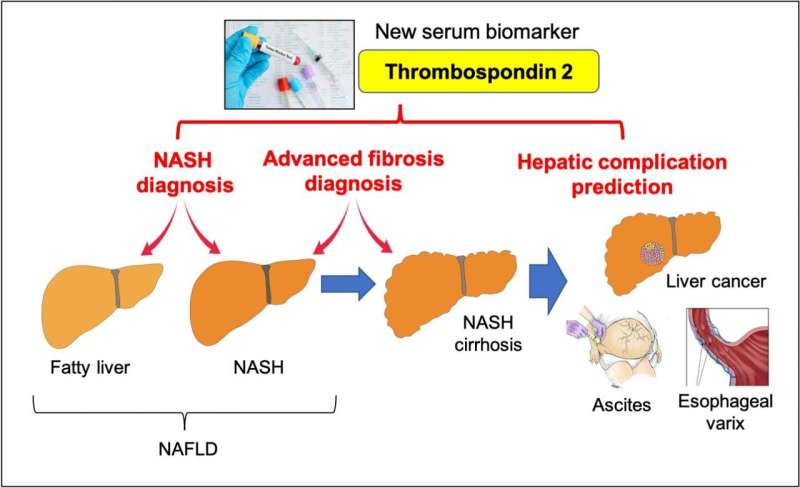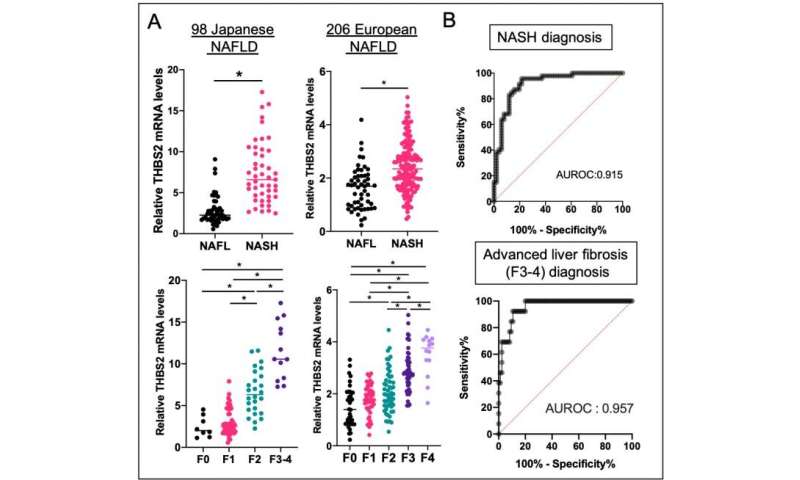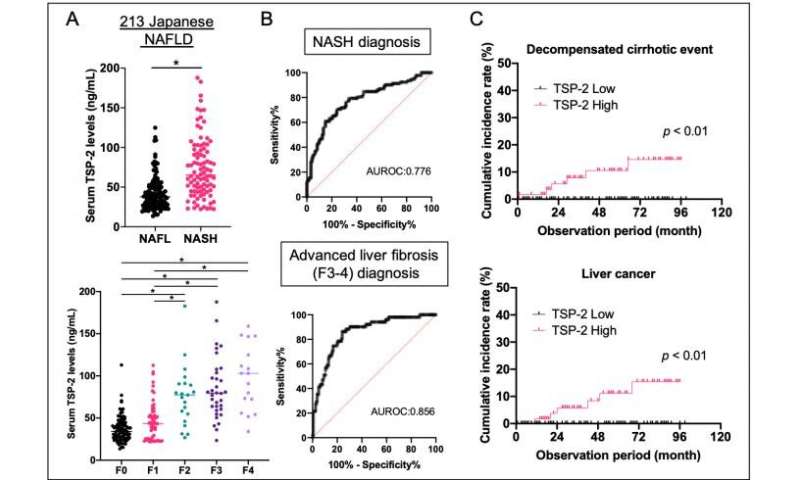
Nonalcoholic fatty liver disease (NAFLD) is the most common liver disease worldwide and can progress to liver cirrhosis, liver failure or cancer. Currently, nonalcoholic steatohepatitis (NASH) diagnosis requires an invasive liver biopsy which can lead to procedural complications. Now, researchers at Osaka University working with international collaborators have identified a noninvasive biomarker that can identify patients at risk of NAFLD complications using a simple blood test.
Owing to the increasing prevalence of obesity worldwide, as many as one in four humans has NAFLD. Unrelated to alcohol intake by definition, the early stage—NAFL (nonalcoholic fatty liver) – is asymptomatic. Unfortunately, progression to NASH incurs inflammatory damage and eventually liver fibrosis occurs; this may further lead to adverse outcomes. Liver deterioration can be deferred by lifestyle modifications comprising diet and exercise; therefore, early diagnosis is key.
Diagnostic confirmation requires a needle biopsy; however, the disadvantages include expense and variability in sampling and interpretation. The research team investigated whether they could devise a diagnostic screen using transcriptomics, the emerging science of analyzing the ‘transcriptome,’ the entire array of an organism’s messenger RNA molecules derived from expression of the genome.
“We obtained liver tissue from over 300 Japanese and European patients with biopsy-proven NAFLD and performed global RNA sequencing,” co-first author Kazuhiro Kozumi explains. “Remarkably, from the protein patterns we could not only distinguish NASH from NAFL, but also determine the molecular hallmarks of NASH pathology. Specifically, we pinpointed that levels of thrombospondin-2 (TSP-2), a glycoprotein encoded by the THBS2 gene, were increased in both NASH and advanced fibrosis.”


The researchers established that THBS2 expression in liver cells paralleled the clinical indicators conventionally used to categorize the pathological changes including serum enzyme levels, NAFLD Activity Score and NAFLD Fibrosis Score. “Serum levels of TSP-2 in NAFLD patients were significantly higher in NASH than in NAFL,” co-first author Takahiro Kodama claims, “and, interestingly, the increase tallied with the degree of fibrosis.”
Source: Read Full Article
